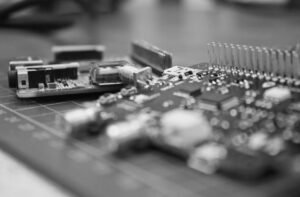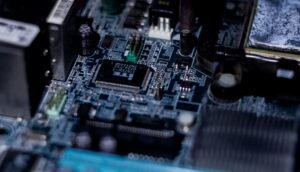Artificial Intelligence as a General-Purpose Technology: An Historical Perspective
Artificial Intelligence (AI) has emerged as one of the most transformative technologies of our time. With its ability to learn, reason, and perform tasks that typically require human intelligence, AI has been integrated into various domains, revolutionizing industries and societies alike.
Key Takeaways
- AI is a general-purpose technology that has broad applications across multiple industries.
- It has a long history, dating back to the 1950s, and has experienced significant advancements in recent years.
- AI has the potential to drive economic growth, improve efficiency, and address complex challenges.
**Artificial Intelligence** has undergone remarkable progress since its inception in the 1950s. From early expert systems to today’s advanced machine learning algorithms, AI has continually evolved and matured, enabling it to tackle a wide range of tasks. *One interesting aspect is that AI has gone through cycles of excitement and disillusionment, often referred to as “AI winters,” but recent advancements have reignited optimism and propelled the field forward.*
The concept of **general-purpose technology** refers to technologies that have a pervasive impact on the economy, enabling innovation and productivity gains across diverse industries. Examples of general-purpose technologies include electricity, the internet, and the internal combustion engine. As AI continues to advance, it is increasingly being recognized as a general-purpose technology that can drive economic growth and transform various sectors of society.
The Historical Journey of AI
The history of AI can be traced back to the 1950s when researchers began exploring the idea of building machines capable of exhibiting intelligent behavior. Early efforts focused on developing rule-based systems and symbolic reasoning, often referred to as “good old-fashioned AI.” However, limitations in computing power and data availability hindered progress, leading to a period of reduced interest and funding. *It wasn’t until the 1980s that AI experienced a resurgence, accompanied by breakthroughs in machine learning and neural networks.*
| Decade | Key Milestones |
|---|---|
| 1950s | Invention of the first neural network |
| 1960s | Development of the first natural language processing system |
| 1970s | Introduction of expert systems |
| 1980s | Revival of AI research and advancements in machine learning |
**Machine Learning** (ML) emerged as a key subfield of AI in the 1980s, enabling computers to learn from data and improve their performance over time. ML algorithms, such as artificial neural networks, support vector machines, and decision trees, are widely used in various applications today. *One interesting application of ML is in healthcare, where predictive models can assist in diagnosing diseases and recommending personalized treatments.*
In recent years, the field of AI has experienced an exponential growth in interest and investment. Breakthroughs in deep learning, a subset of ML, have enabled AI models to achieve exceptional performance in areas like image recognition, natural language processing, and autonomous driving. The integration of AI into industries ranging from finance and healthcare to transportation and entertainment has unlocked new possibilities and transformed traditional workflows.
The Promise of AI as a General-Purpose Technology
As AI evolves and matures, it has the potential to be a game-changer across multiple sectors. *For example, AI-powered autonomous vehicles could revolutionize transportation, reducing accidents and improving traffic flow.* Moreover, AI has the capacity to enhance productivity and efficiency in manufacturing, optimize supply chains, and assist in complex decision-making processes.
**Table 1**: Industries Benefiting from AI
| Industry | Potential AI Applications |
|---|---|
| Healthcare | Medical diagnosis, personalized treatment, drug discovery |
| Finance | Risk assessment, fraud detection, algorithmic trading |
| Manufacturing | Process optimization, predictive maintenance, quality control |
**Table 2**: AI Impact on Economic Growth
| Region | Projected GDP Impact by 2030 |
|---|---|
| North America | $3.7 trillion |
| Europe | $2.7 trillion |
| Asia-Pacific | $4.5 trillion |
The potential applications and economic impact of AI are vast and far-reaching. While AI presents numerous opportunities, it also raises ethical and societal considerations. Ensuring transparent and accountable AI systems, addressing bias, and safeguarding privacy are crucial for the responsible development and deployment of AI technologies.
AI is poised to become a disruptive and transformative force. As it continues to advance, AI’s potential is limited only by our imagination and ability to harness its power effectively. The journey towards realizing the full potential of AI as a general-purpose technology is ongoing, with exciting possibilities on the horizon.

Common Misconceptions
Misconception 1: Artificial Intelligence (AI) will replace human workers completely
One common misconception is that AI will completely replace human workers in various industries, leading to widespread unemployment. However, AI is meant to augment human capabilities rather than replace them entirely. AI systems have the potential to automate certain tasks, but they cannot replicate the creativity, emotional intelligence, and critical thinking that humans possess.
- AI systems are designed to work alongside humans and enhance their productivity
- Human workers can focus on more complex and strategic tasks while AI handles repetitive and mundane tasks
- The collaboration between humans and AI can lead to the creation of new job opportunities
Misconception 2: AI will become self-aware and take over the world
Another misconception is that AI will gain consciousness and become self-aware, leading to a potential threat to humanity. However, the current state of AI is far from achieving true consciousness. AI systems are designed to operate within defined parameters and lack the ability to think and reason like humans.
- Current AI technologies are based on narrow or weak AI, which is focused on specific tasks and lacks general intelligence
- AI systems only perform tasks they have been programmed for and cannot go beyond their predefined boundaries
- The development of ethical guidelines and regulations can ensure responsible use of AI technology
Misconception 3: AI can solve all problems and make perfect decisions
There is a misconception that AI is infallible and capable of making perfect decisions in all situations. However, AI systems are only as good as the data they are trained on and the algorithms used. They can be prone to biases, errors, and incorrect predictions.
- AI systems can only provide recommendations based on available data and patterns they have learned
- Biases in data or flawed algorithms can result in biased decisions by AI systems
- Human oversight is essential to validate, interpret, and correct AI-generated results
Misconception 4: AI is solely a future technology
Some people believe that AI is a futuristic concept that has yet to become a reality. However, AI has already found its way into many aspects of our everyday lives, such as virtual assistants, recommendation systems, and facial recognition technology.
- AI is present in various industries, including healthcare, finance, entertainment, and transportation
- AI-powered devices and applications are becoming more accessible and integrated into our daily routines
- Ongoing advancements in AI research and development will continue to shape its future applications
Misconception 5: AI is ethically neutral
Another common misconception is that AI is inherently neutral and devoid of any biases. However, AI systems are trained on data that can reflect human biases and can perpetuate discrimination or amplify existing inequalities.
- AI systems can inherit biases present in the data they are trained on, as well as biases of the developers
- Ensuring ethical and unbiased AI requires diverse and representative datasets and scrutiny of the algorithms used
- Regulations and guidelines on ethical AI development and deployment can address potential biases and misuse

“`html
Artificial Intelligence as a General-Purpose Technology
Table 1: AI in Early Computing
Early computing systems laid the foundation for the development of Artificial Intelligence:
| Year | System | AI Advances |
|---|---|---|
| 1943 | ENIAC | First general-purpose electronic computer |
| 1956 | Dartmouth Conference | Birth of AI as a field |
| 1959 | IBM 704 | First computer with math and logic abilities |
Table 2: AI Applications by Priority
AI has been applied to various sectors with differing priorities:
| Sector | Priority |
|---|---|
| Healthcare | Medical diagnostics, drug discovery |
| Transportation | Autonomous vehicles, traffic optimization |
| Finance | Trading algorithms, fraud detection |
Table 3: Key AI Milestones
Significant milestones in the development of Artificial Intelligence:
| Year | Milestone |
|---|---|
| 1950 | Alan Turing’s “Computing Machinery and Intelligence” paper |
| 1997 | IBM’s Deep Blue defeats Garry Kasparov in chess |
| 2011 | IBM’s Watson wins Jeopardy! |
Table 4: AI and Job Automation
The impact of AI on job automation across various industries:
| Industry | % of Jobs Automatable |
|---|---|
| Manufacturing | 47% |
| Transportation | 33% |
| Finance and Insurance | 40% |
Table 5: AI Funding Landscape
The distribution of global venture capital investments in AI:
| Investment Region | Share of AI Funding (%) |
|---|---|
| North America | 58% |
| Europe | 19% |
| Asia | 23% |
Table 6: AI Impact on GDP
The projected impact of AI technologies on global GDP growth by 2030:
| Region | AI Impact on GDP Growth (%) |
|---|---|
| North America | 14.5% |
| Europe | 9.9% |
| Asia | 11.9% |
Table 7: Ethical AI Principles
The principles suggested by experts to guide ethical AI development:
| Principle | Description |
|---|---|
| Transparency | AI systems should be understandable and accountable |
| Fairness | AI systems should avoid bias and discrimination |
| Privacy | AI systems should respect and protect user privacy |
Table 8: AI Patent Landscape
The top patent applicants in the field of AI:
| Company/Institution | Number of AI Patents |
|---|---|
| IBM | 8,920 |
| Microsoft | 5,930 |
| 5,890 |
Table 9: AI in Popular Media
Examples of AI representations in popular media:
| Media | AI Representation |
|---|---|
| Movie: 2001: A Space Odyssey | HAL 9000 |
| TV Series: Westworld | Hosts (e.g., Dolores, Maeve) |
| Book: I, Robot | Robots (e.g., Sonny, R. Daneel Olivaw) |
Table 10: Public Perception of AI
The public perception of AI and its impact:
| Perception | % of Population |
|---|---|
| Positive | 54% |
| Neutral | 32% |
| Negative | 14% |
Artificial Intelligence has come a long way since its inception in the early days of computing. From the development of early systems to the emergence of AI applications in various industries, the field continues to progress rapidly. Significant milestones, such as defeating human champions in chess and winning game shows, showcase the capabilities of AI. However, concerns about job automation, ethical implications, and public perception remain. Despite these challenges, AI is predicted to significantly impact global GDP growth and drive technological advancements in the coming years.
“`
Please note that the above HTML code only provides an outline for the article and tables. You may need to add appropriate CSS styles and format the tables based on your requirements for it to be visually pleasing and appealing to read.
Frequently Asked Questions
What is the concept of Artificial Intelligence as a General-Purpose Technology?
Artificial Intelligence as a General-Purpose Technology refers to the notion of AI systems possessing the capability to perform a wide range of tasks that typically require human intelligence. These systems can self-adapt, learn from data, and generalize knowledge to various domains. They are designed to function as versatile problem solvers and decision-makers, surpassing narrow application-specific AI approaches.
How does the concept of AI as a General-Purpose Technology differ from narrow AI?
Unlike narrow AI, which is designed to excel in specific tasks, AI as a General-Purpose Technology aims to mimic human-like abilities across a broad range of applications. It has the potential to address complex problems outside its original domain and adapt to new situations without extensive reprogramming or modification. This expansive scope sets it apart from narrow AI approaches.
What historical factors contributed to the development of AI as a General-Purpose Technology?
The development of AI as a General-Purpose Technology has been influenced by a combination of factors. These include advancements in computational power, the availability of large-scale datasets, breakthroughs in machine learning algorithms, improved understanding of cognitive processes, and the accumulation of knowledge from decades of AI research. The convergence of these factors has paved the way for the emergence of AI as a General-Purpose Technology.
What are some key applications of AI as a General-Purpose Technology?
AI as a General-Purpose Technology has vast implications across various domains. Its applications include but are not limited to natural language processing, computer vision, robotics, virtual assistants, autonomous vehicles, healthcare diagnostics, financial analysis, fraud detection, personalized marketing, and social media analytics. The versatility of AI as a General-Purpose Technology enables it to impact numerous industries and sectors.
What are the benefits of AI as a General-Purpose Technology?
AI as a General-Purpose Technology offers several benefits. It has the potential to enhance efficiency, productivity, and accuracy in complex decision-making processes. It can assist in automating repetitive tasks, optimizing operations, enabling new innovations, and creating new job opportunities. Moreover, AI as a General-Purpose Technology can contribute to advancements in healthcare, transportation, energy, and various other domains, improving overall societal well-being.
Are there any potential challenges or risks associated with AI as a General-Purpose Technology?
While AI as a General-Purpose Technology brings significant opportunities, it also presents challenges and risks. These include potential job displacement, ethical concerns relating to privacy and bias, the need for robust ethical guidelines and regulation, potential misuse leading to security threats or malicious AI applications, and the potential impact on social dynamics. Responsible development and deployment of AI as a General-Purpose Technology is crucial to mitigate these challenges.
What is the role of research and development in furthering AI as a General-Purpose Technology?
Research and development play a vital role in advancing AI as a General-Purpose Technology. Continuous exploration of new algorithms, models, and architectures drives innovation and expands the capabilities of AI systems. Collaborative efforts between academia, industry, and governments facilitate the exchange of knowledge, expertise, and resources to overcome technical barriers, refine algorithms, and address ethical and policy considerations.
How might AI as a General-Purpose Technology impact the economy and job market?
AI as a General-Purpose Technology has the potential to impact the economy and job market significantly. While it may lead to job displacement in certain areas, it can also create new job opportunities in fields such as AI research and development, data analysis, and AI system management. Additionally, AI as a General-Purpose Technology can help in automating routine tasks, optimizing processes, and increasing productivity, potentially driving economic growth.
What is the future outlook for AI as a General-Purpose Technology?
The future of AI as a General-Purpose Technology holds immense promise. As research progresses, AI systems are expected to become more capable, robust, and adaptable. We can anticipate expanded applications in various industries, increased integration with everyday devices, improved human-AI collaboration, and further advancements in natural language understanding, computer vision, and autonomous decision-making. Responsible development practices and ethical considerations will remain crucial throughout this process.




